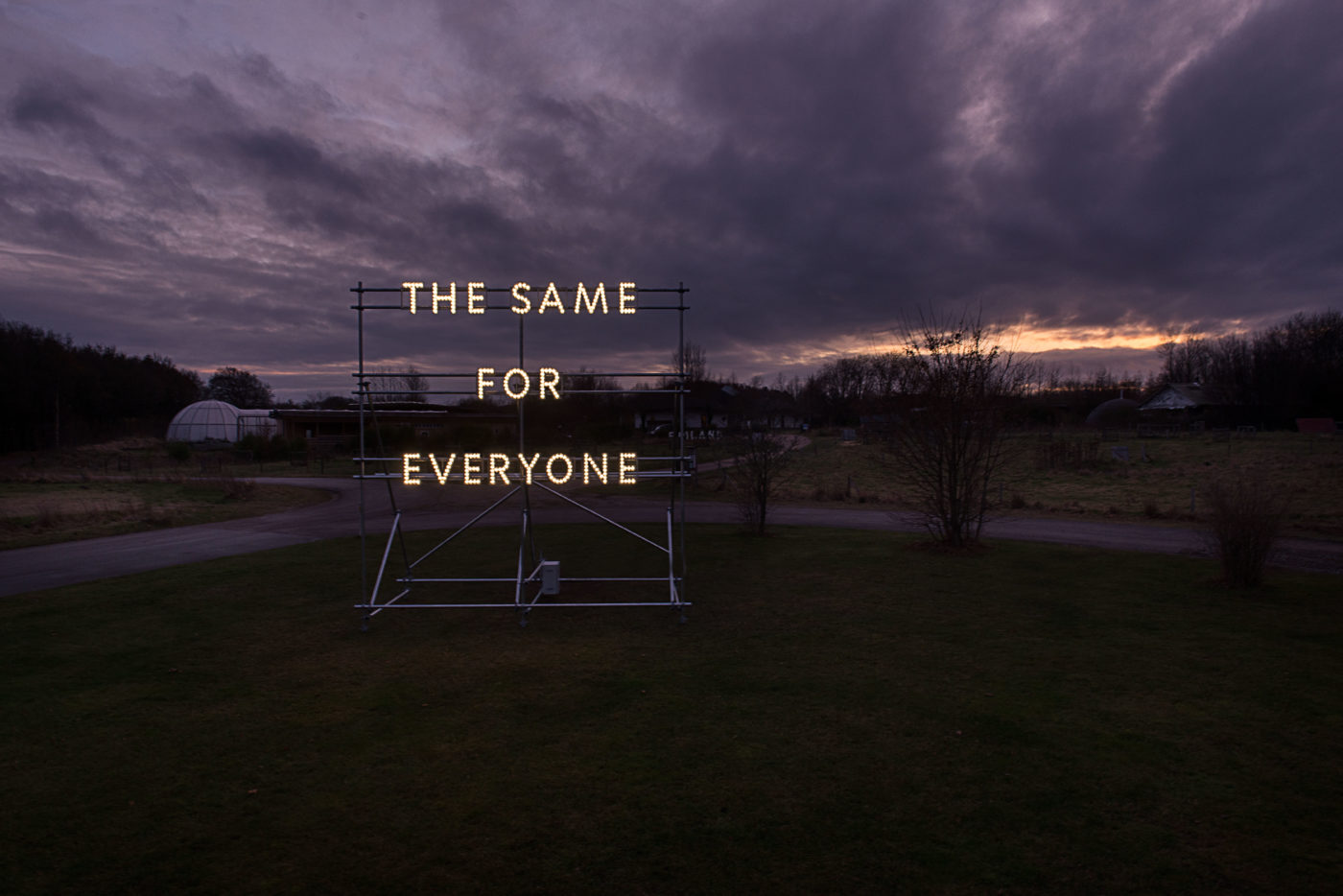This image: The Ladies, King’s Dining Hall, by Melanie Manchot, part of Kettle’s Yard’s reopening exhibition
Ruthie Collins gives you the lowdown on arty happenings around Cambridge in February
In times of revolution, mass change and war, it’s tempting to dismiss art as an irrelevance. Yet this is exactly when art can step into its own as a force for change. Kettle’s Yard reopens this month, with a transformed space, and Actions: the image of the world can be different. This new show explores the poetic, social and political value of art and looks set to be one of the city’s most groundbreaking exhibitions, showing (many iconic) works by 38 artists, including the likes of Barbara Hepworth, Mary Kelly and Richard Long. Go visit, think about what action you can add, to change the world – and enjoy the new café, too.
With its strong links to satire and surrealist performance, Cambridge’s art scene has long been a hotbed for activists, where the crossover between art and politics has produced some internationally significant – and hilarious – results. We all loved Terrorbull’s political (banned!) board games, illustrated by Cambridge illustrator Tom Morgan-Jones (check terrorbullgames.co.uk). With this month being cause for mass celebration of one of the biggest victories that political activism has ever seen – the centenary of women winning the right to vote – it’s fabulous to see Cambridge artists Jill Eastland, Jane Hellings and Cathy Dunbar using art to remind us all of the need not just to celebrate but also to keep pushing for change, to keep pushing for equality.
“We wanted to keep that political edge as part of the celebrations,” explains artist Jill Eastland, who’s one of the city’s most respected grassroots artists. “We are making textile bricks as a way for activists to come together. Our Sew Angry group meets fortnightly and is open to all.”

This image: The Same for Everyone, by Nathan Coley, part of Kettle’s Yard’s reopening exhibition
The bricks are a timely reminder not just of the militant activism that won women our current freedoms, but also of how our freedom was once considered criminal. “Political activism is still strong,” comments Jill.
Cambridge University Library is hosting an exhibition as part of the celebrations, Pictures and Politics: the Art of Suffrage Propaganda, with a special talk on 3 February from author Elizabeth Crawford (whose books include Suffrage: a biographical dictionary of suffrage artists). The exhibition shows a range of suffragette posters that helped women win the vote.
“Using art in activism is very powerful: it’s non-violent, people will look at it and it’s accessible,” explains Cathy Dunbar, who is making a women’s suffrage banner for the celebrations, a three-panelled tryptic, exploring history, where women are at now, and what women want. “Art can be a positive way for people to get involved in politics. People can feel that they can’t do anything. But they can. A few years ago, in 2014, we made a piece You’ve got everything you might as well take the shirts off our back, in response to austerity politics. We made loads of shirts in response to austerity, embroidered with the slogan, to be left in a big pile outside Downing Street. We put a call out and people submitted their shirts, but the police confiscated them. It shows you the power of art. They don’t confiscate banners, do they?”
“Cambridge’s art scene has long been a hotbed for activists“
The artists have also recently launched a Cambridge branch of the Artists Union, with regular meet ups, free legal advice and insurance for artists. “Artists are often seen as people who will do something for nothing, because we love art. Unless you are the likes of Damien Hirst, the ordinary artist can struggle: the union helps with that,” says Cathy. The Artists Union has been helping to address working conditions for artists, internships, plus issues of pay. Check out artistsunionengland.org.uk for details.
Finally, in a world dominated by environmental catastrophe and divisive politics, it’s been inspirational to see Cambridge film maker James Murray White working on a film entitled Finding Blake, which draws fresh inspiration from William Blake. The film follows the work of acclaimed letter-carver and stonemason Linda Kindersley MBE, based in Cambridge, who’s been commissioned to create a new grave for the poet in Bunhill Fields, London.
“From The Sex Pistols to Patti Smith, Blake’s influence and unique spiritual vision remains strong. Blake remained true to himself, to an inner vision that saw far and wide,” explains James. “We need vision and connection to our highest spiritual nature – and Blake was a master articulator of this.” Follow the progress of the film on sky-larking.co.uk.
With light festival e-Luminate also returning to the city this month on the 9 February, themed around colour and guest curated by James Fox, there’s plenty to inspire us all into action, love and optimism. So, go for stroll after dark, to enjoy the light this month – have a fantastic February, all.

